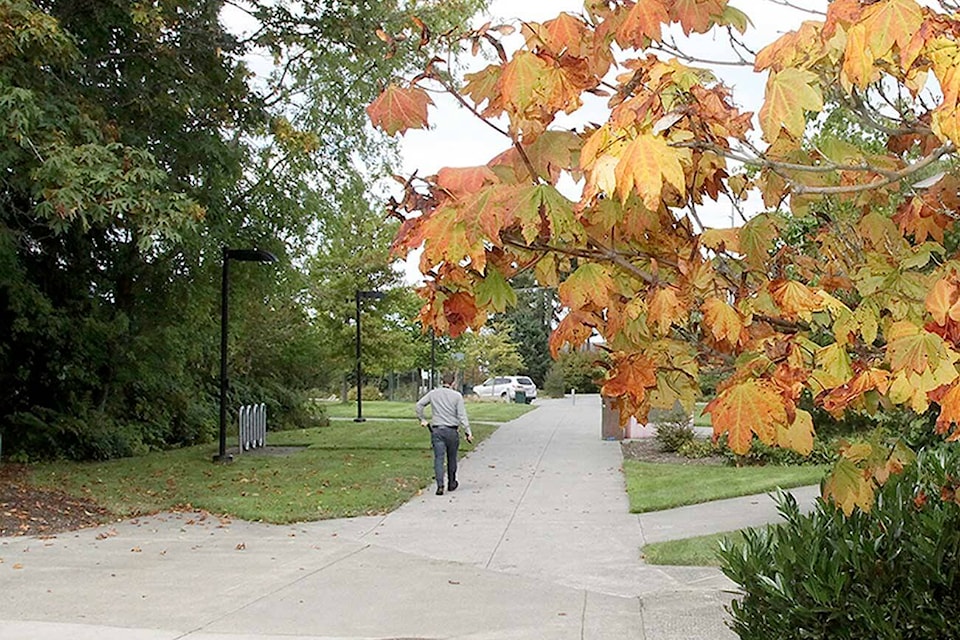Trees and shrubs are the backbone of the garden. Compared to herbaceous plants they require little care. Plants tend to overwinter better when their roots are not wanting for moisture. Take time to water all plants including trees and shrubs in the fall until the ground freezes.
Plant growth in the fall is very deceiving. Little if any growth is occurring above the ground as it is all taking place in the earth, therefore it is often ignored. Between the time when plants stop putting out new growth and when the soil freezes, plants are developing new roots and storing food. Plants that have been transplanted are pushing into surrounding soil to anchor themselves against frost heaves.
Trees and shrubs roots reach beyond the upper growth of the plant but the majority of feeder roots are in the top foot (30 cm) of soil in the area around the dripline, straight down from the branches, of the plant. Placing a low flowing sprinkler or letting water trickle out of a hose around the plants dripline is an efficient way to water. Be sure to move the hose to soak the soil on all sides of the plant.
Determining how much to water is enough can be accomplished either by using a rain gauge or digging in the soil. Place a rain gauge in the area being sprinkled and check it periodically until it contains and inch (2 cm) of water. Another way is to dig in the soil and see how far the water has penetrated. Aim for four plus inches (10 cm) knowing that the moisture will continue to seep downwards. Deep watering encourages the roots to grow downward looking for moisture.
Nature will supply some moisture but watering every seven to 10 days will ensure that the roots are in good condition going into winter.
If time restraints make it impossible to water all the trees and shrubs in, in the fall concentrate on evergreens. Unlike deciduous trees, evergreens are never truly dormant. They transpire, loose moisture, on all warm or sunny days including ones in winter. If the moisture within the plant is depleted the needles or scales become dry, turn a different shade of green before turning brown.
The only way to rejuvenate a dried evergreen is to prune out the dead areas which can lead to a misshapen plant.
During the winter months the reflection of the sun on the snow and wind increase evergreens transpiration rate. Covering evergreens with a loosely wrapped burlap or a commercial cover will protect the plant from direct sunlight and wind. Any cover used must be breathable and pleasing to the eye as it will be part of the landscape for four to five months.
Anti-transpiration sprays have been used for over 50 years. When sprayed on a plant, the transpiration rate slows ensuring that the plant retains more moisture. The spray will need to be applied periodically throughout the winter months.
Well hydrated roots in the fall will provide healthier plants in the next growing season.
Linda Tomlinson has gardened in Central Alberta for over 30 years.
